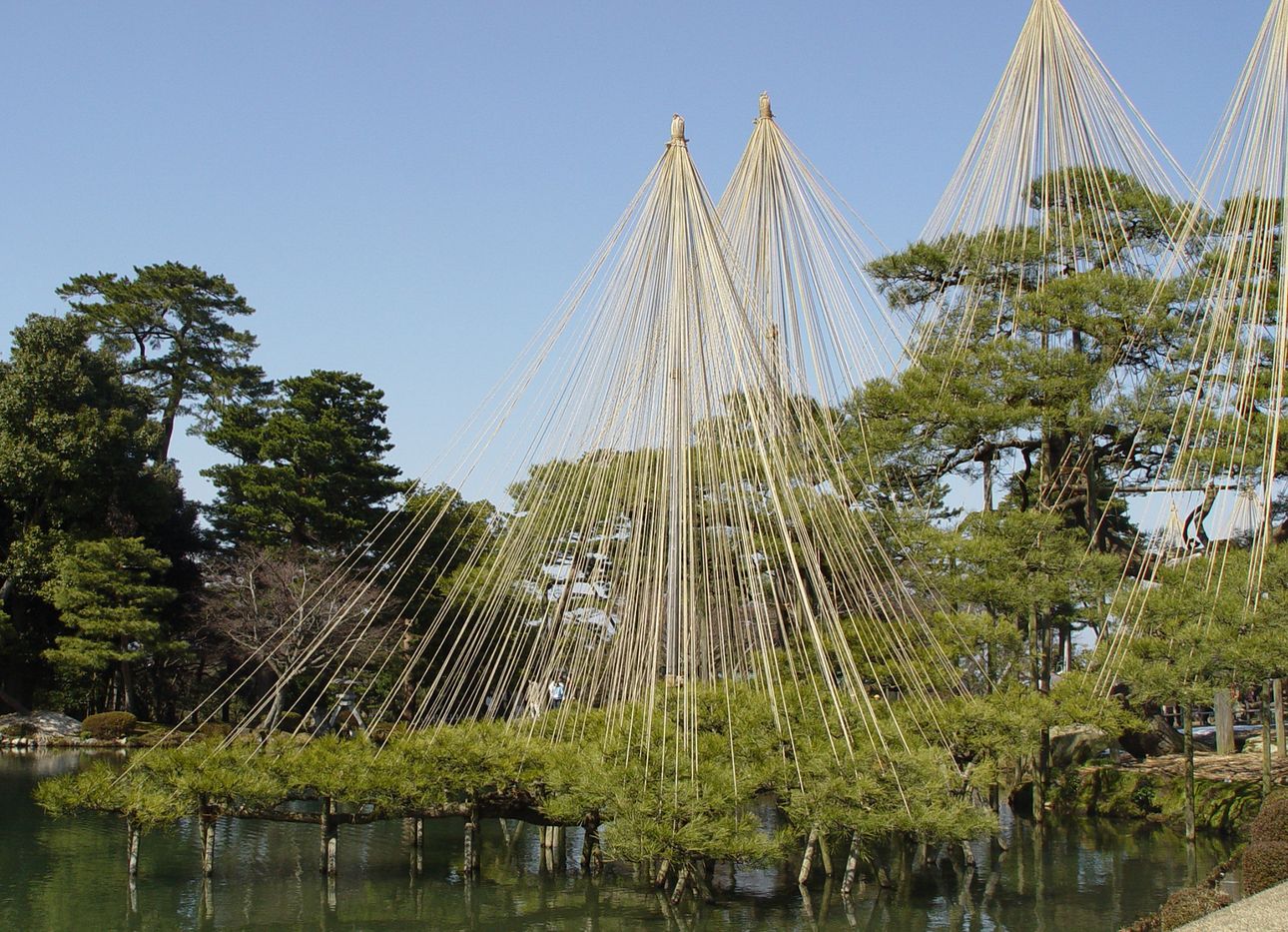
Yukitsuri, a Sculptural Japanese Gardening Tradition, Is a Wonder to Behold
Those visiting Japan’s beloved gardens during the winter might be struck by the sight of trees confined within mysterious cone-shaped structures. Existing somewhere between art and scaffolding, yukitsuri—the term for these intriguing rope webs—is a traditional Japanese gardening technique intended to protect trees’ long branches from bending and breaking under the weight of snow. Workers construct the dramatic enclosures in teams, tying a bamboo or wood pole to each tree’s trunk, then suspending straw ropes from the top and tying them to ends of individual branches.
Although present in Tokyo, the umbrella-like canopies are most commonly found in prefectures such as Toyama and Fukui in the Hokuriku region, where snow falls heavily and often. Kanazawa, the capital city of the Ishikawa Prefecture, on Japan’s western coast, offers one of the most impressive displays of the practice in its sprawling Kenrokuen Garden, where hundreds of master ropers bind hundreds of trees beginning every November. At once functional and fantastic, the constructions double as a seasonal showcase of one the country’s time-honored crafts, transforming its green spaces into sculpture parks until the supports are dismantled in the spring.